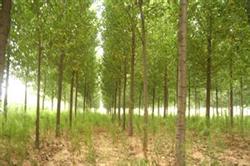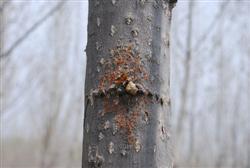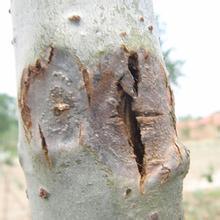Poplar pest control

Poplar pests can be divided into the following categories in terms of damage methods and control measures: first, leaf-eating pests: mainly poplar fan boat moth, poplar small boat moth, poplar two-tail boat moth, poplar leaf borer, diamondback moth, beetle and so on. Poplar is damaged by the above pests from seedling stage to mature stage, which results in leaf defect or depletion. However, in the young tree stage (1-4 years old), the damage had a great effect on the growth and survival. This kind of leaf-eating pests generally choose organophosphorus (trichlorfon, dimethoate, etc.) and pyrethroid pesticides by spraying according to the appropriate proportion, which can achieve the control effect. Second, piercing and sucking pests and mites: there are mainly grass scale, leafhopper, red spider and so on. In early spring, the tree absorbs buds and twigs, causing the whole plant to die. In dry years, when there are a large number of red spiders and leafhoppers, the whole leaves will fall off due to the absorption of leaf juice. Before the nymph goes up the tree in early spring, the 10 cm wide ring of waste engine oil and organophosphorus pesticide should be coated with waste oil and organophosphorus pesticide ring before the nymph goes up the tree in early spring, so as to prevent the nymph from going up the tree or touching it. If you climb the tree, you can use omethoate and other pesticide spray control. Red spiders can be controlled by triclofenac pesticide spray, generally once every other week, 2 or 3 times. Third, drilling pests: mainly mulberry longicorn beetles, bare-shouldered longicorn beetles, cloud-spotted longicorn beetles and so on. The poplar trees in our province are mainly damaged by mulberry longicorn beetles. Mulberry longicorn beetles occur one generation a year, and obvious diarrhea holes (from top to bottom) and sawdust exposure can be seen in the larval trunk. Find the freshest discharge hole during prevention and treatment, insert it with a poison label, or use a syringe to inject about 500 times 1 ml of organophosphorus pesticides, then seal the hole with cotton balls or soft mud.
- Prev

The rot disease of poplar and its control
Poplar is a general name for deciduous trees of the genus Populus in the family Populus. There are more than 100 species in all genera, mainly distributed in temperate zone, cold zone, Mediterranean coastal countries and Middle East in Europe, Asia and North America. There are more than 50 species in China. Wood is used as civil building materials, producing furniture, matchsticks, sawn timber, paper, etc., but also man-made.
- Next

Control of common insect pests in poplar
In recent years, poplar canker disease is common, and the incidence of serious land has reached more than 30%. Canker seriously weakens the tree potential and inhibits growth. If it is not controlled in time, it will cause greater economic losses to growers. Disease symptoms canker mainly harms tree trunks, is a chronic disease, the initial in the skin.
Related
- Fuxing push coffee new agricultural production and marketing class: lack of small-scale processing plants
- Jujube rice field leisure farm deep ploughing Yilan for five years to create a space for organic food and play
- Nongyu Farm-A trial of organic papaya for brave women with advanced technology
- Four points for attention in the prevention and control of diseases and insect pests of edible fungi
- How to add nutrient solution to Edible Fungi
- Is there any good way to control edible fungus mites?
- Open Inoculation Technology of Edible Fungi
- Is there any clever way to use fertilizer for edible fungus in winter?
- What agents are used to kill the pathogens of edible fungi in the mushroom shed?
- Rapid drying of Edible Fungi

